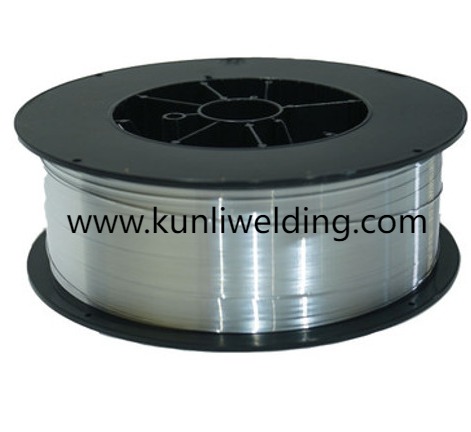Kunliwelding Why choose ER5087 wire for demanding marine repairs and structural work

In coastal fabrication yards and repair shops where weather driven schedules and supply chain shifts shape work plans, choosing the right filler is a practical decision with real operational consequences. Aluminum Welding Wire ER5087 is often specified where elevated weld strength and resistance to cracking are priorities in marine or heavy duty applications. Comparing ER5087 with a commonly used alternative such as ER5356 helps fabricators match filler attributes to the demands of the project and the realities on site.
At the heart of the comparison are metallurgical differences that influence how a weld performs under load and in corrosive atmospheres. ER5087 has alloying characteristics that tend to produce weld metal with higher tensile strength and improved fracture toughness under certain conditions. That makes it a frequent option for structural repairs and assemblies where welded joints face dynamic loading or thermal cycles. In contrast ER5356 offers ductility and resistance to environmental attack while being forgiving in thinner sections and general fabrication tasks. Understanding this trade off allows engineers to choose the filler that aligns with service expectations rather than defaulting to a single material.
Fabrication technique plays a big role in the final outcome. Both fillers respond to careful surface prep controlled heat input and consistent shielding practice. For repair work where access is limited and speed matters, ER5087's deposition profile can help crews achieve a robust repair without excessive build up. Yet that benefit depends on stable feed paths correct drive roll profiles and a short pilot bead to confirm parameters under real world feeder geometry. Shops that include a formal acceptance script for new spool lots save time by avoiding iterative trial and error on the first structural joint.
Service environment is another selection driver. Where assemblies see repeated wet dry cycles or salt laden air, finish compatibility matters. A filler that accepts standard coating sequences without creating crevice prone transitions simplifies the maintenance plan. ER5356's balance of ductility and corrosion resistance makes it a common choice for panels and components where fatigue loads are moderate and cosmetic finish matters. ER5087, with its tendency toward higher deposited strength, fits welds that must tolerate heavier structural loads but still require compatible finishing across the heat affected zone.
Operational considerations extend beyond metallurgy. Procurement teams should evaluate packaging and spool handling because coils that arrive damaged or with inadequate inner wraps create feed problems regardless of alloy choice. Suppliers that publish handling notes and suggested starting parameters reduce pilot time and set production up for success. Kunliwelding provides product guidance and acceptance checklists that help shops replicate pilot conditions and document spool codes so any field issues are traceable to a specific batch rather than treated as mystery failures.
Inspection and lifecycle planning close the loop on filler choice. When a team selects ER5087 for a critical weld it is useful to record the pilot bead photo spool marking and the exact welding parameters. This documentation supports later maintenance decisions and clarifies whether observed degradation relates to environmental exposure process drift or packaging damage. Maintenance schedules can then be adjusted based on documented in service behavior rather than conservative assumptions that inflate inspection hours.
Training and short audits affect outcome variability between operators. Small differences in torch angle travel speed or stick out can change bead geometry and residual stress patterns more than marginal alloy differences. Regular refresher sessions combined with a short acceptance checklist keep results reproducible across shifts and sites. This practical discipline is particularly valuable when teams switch between ER5087 and ER5356 for different parts of the same assembly.
Supply chain resilience and project schedules also influence choice. In times when delivery windows tighten and project timelines compress, choosing a filler with clear handling guidance and a supplier who supports staged release reduces risk. A supplier that helps set up a pilot spool and shares handling specs shortens the ramp to production and minimizes the number of sample coils consumed to reach acceptance.
In summary the selection between ER5087 and ER5356 depends on matching alloy behavior to load profiles finishing expectations and shop realities. ER5087 is often favored where higher deposited strength and fracture resistance are required while ER5356 is widely used where ductility and corrosion performance across thinner sections are priorities. Successful outcomes rest on arrival checks pilot testing proper feeder setup and documented weld parameters. Suppliers that publish practical notes and accept staged qualification play a constructive role by aligning manufacturing practice with project needs.
Technical notes and product guidance that support pilot scripts and acceptance criteria are available from suppliers and include handling and packaging recommendations intended for shop level adaptation. For accessible product information and practical application guidance see the technical pages and resources at www.kunliwelding.com .
- Art
- Causes
- Crafts
- Dance
- Drinks
- Film
- Fitness
- Food
- Spiele
- Gardening
- Health
- Home
- Literature
- Music
- Networking
- Other
- Party
- Religion
- Shopping
- Sports
- Theater
- Wellness


